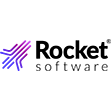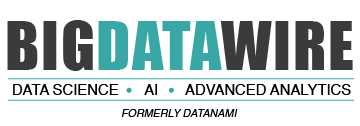

via Shutterstock
A European Union analytics initiative seeks to forge a new software architecture for what developers dub “extreme-scale” data analytics that would be applied to autonomous transportation and “smart mobility” systems.
As the name suggests, the EU’s ELASTIC (Extreme-ScaLe Big-Data AnalyticS in Fog CompuTIng ECosystems) initiative seeks to develop an agile software architecture in which computing is dynamically distributed to real-time analytics.
Launched in December 2018, the three-year, €5.9 million ($6.4 million) project is being coordinated by the Barcelona Supercomputing Center.
ELASTIC also seeks to address the shortfalls associated with real-time analytics running in the cloud. Program managers note that communications and data movement make real-time analytics difficult.
“In order to provide an improved ecosystem, which considers the full compute continuum, there is a great need for analysis and monitoring tools that support higher-level concerns and non-functional aspects in a comprehensive manner, from the edge to the cloud,” the group said.
A key component of the architecture is a “non-functional requirements” (NFR) tool designed to handle both analytics and service execution. For example, NFR would help transit managers consider “trade-offs between performance, predictability, energy efficiency, communication quality and security,” the group said. “The result of this analysis is a set of possible initial deployment configurations.”
Among the transit applications are obstacle detection and predictive maintenance. The software architecture would combine data from different sensors to help vehicles spot hazards and avoid collisions. The real-time capability would use a platform called the Next Generation Autonomous Positioning system along with the standard Advanced Driving Assistant System.
Project managers announced this week the data analytics platform will be integrated into public trams as part of a smart city effort in Florence, Italy. The goal is a 25 percent reduction in annual incidents on the Tuscan city’s tram system.
Meanwhile, the predictive maintenance capability seeks to track repair needs at an early stage to reduce operational costs and keep transit infrastructure operating for longer periods between overhauls. The predictive analytics tool is expected to result in a 30 percent reduction in standard maintenance costs.
Together, the tools support by the analytics architecture would yield a 5 percent improvement in traffic patterns as measured in terms of interactions between public transit and drivers.
Recent items:
Transit Effort Uses Robots to Gather Inspection Data
Getting Ready for Real-Time Decisioning
July 16, 2025
- HERE Technologies Launches GIS Data Suite: A New Standard in Foundational GIS Data for Esri Users
- Honeycomb Announces Availability of MCP in the New AWS Marketplace AI Agents and Tools Category
- SiMa.ai to Accelerate Edge AI Adoption with Cisco for Industry 4.0
- Airbyte Data Movement Enhances Data Sovereignty and AI Readiness
- Data Squared Announces Strategic Partnership with Neo4j to Accelerate AI-Powered Insights for Government Customers
- Intel and Weizmann Institute Speed AI with Speculative Decoding Advance
- Atos Launches Atos Polaris AI Platform to Accelerate Digital Transformation with Agentic AI
July 15, 2025
- Nutanix Survey Finds Financial Firms Embracing GenAI but Struggling with Skills Gaps
- Qdrant Launches Qdrant Cloud Inference to Unify Embeddings and Vector Search Across Multiple Modalities
- Data Axle Reveals Most Brands Still Rely on Fragmented Customer Data
- Cyberlocke Expands Data Assurance Platform with New DQS Framework
- Coralogix Introduces MCP Server to Help Customers Build Smarter AI Agents
- Forrester’s 2026 Budget Planning Guides: Leaders Grow More Cautious As Economic Uncertainty Persists
- Open Flash Platform Initiative Unveiled by Industry and Research Leaders
- Collate Raises $10M Series A to Solve the Data Intelligence Challenges for Enterprise Customers
- TigerGraph Secures Strategic Investment to Advance Enterprise AI and Graph Analytics
- Seagate Launches 30TB Drives to Power AI and Edge Workloads
July 14, 2025
- Inside the Chargeback System That Made Harvard’s Storage Sustainable
- LinkedIn Introduces Northguard, Its Replacement for Kafka
- What Are Reasoning Models and Why You Should Care
- Databricks Takes Top Spot in Gartner DSML Platform Report
- Scaling the Knowledge Graph Behind Wikipedia
- Top-Down or Bottom-Up Data Model Design: Which is Best?
- Iceberg Ahead! The Backbone of Modern Data Lakes
- Four Steps for Turning Data Clutter into Competitive Power: Your Sovereign AI and Data Blueprint
- Fine-Tuning LLM Performance: How Knowledge Graphs Can Help Avoid Missteps
- What Is MosaicML, and Why Is Databricks Buying It For $1.3B?
- More Features…
- Supabase’s $200M Raise Signals Big Ambitions
- Mathematica Helps Crack Zodiac Killer’s Code
- Solidigm Celebrates World’s Largest SSD with ‘122 Day’
- Confluent Says ‘Au Revoir’ to Zookeeper with Launch of Confluent Platform 8.0
- Data Prep Still Dominates Data Scientists’ Time, Survey Finds
- ‘The Relational Model Always Wins,’ RelationalAI CEO Says
- With $17M in Funding, DataBahn Pushes AI Agents to Reinvent the Enterprise Data Pipeline
- AI Is Making Us Dumber, MIT Researchers Find
- The Top Five Data Labeling Firms According to Everest Group
- Toloka Expands Data Labeling Service
- More News In Brief…
- Gartner Predicts 40% of Generative AI Solutions Will Be Multimodal By 2027
- Seagate Unveils IronWolf Pro 24TB Hard Drive for SMBs and Enterprises
- TigerGraph Secures Strategic Investment to Advance Enterprise AI and Graph Analytics
- Campfire Raises $35 Million Series A Led by Accel to Build the Next-Generation AI-Driven ERP
- BigBear.ai And Palantir Announce Strategic Partnership
- Databricks Announces Data Intelligence Platform for Communications
- Deloitte Survey Finds AI Use and Tech Investments Top Priorities for Private Companies in 2024
- Gartner Predicts 30% of Generative AI Projects Will Be Abandoned After Proof of Concept By End of 2025
- Code.org, in Partnership with Amazon, Launches New AI Curriculum for Grades 8-12
- Gartner Predicts Over 40% of Agentic AI Projects Will Be Canceled by End of 2027
- More This Just In…



























